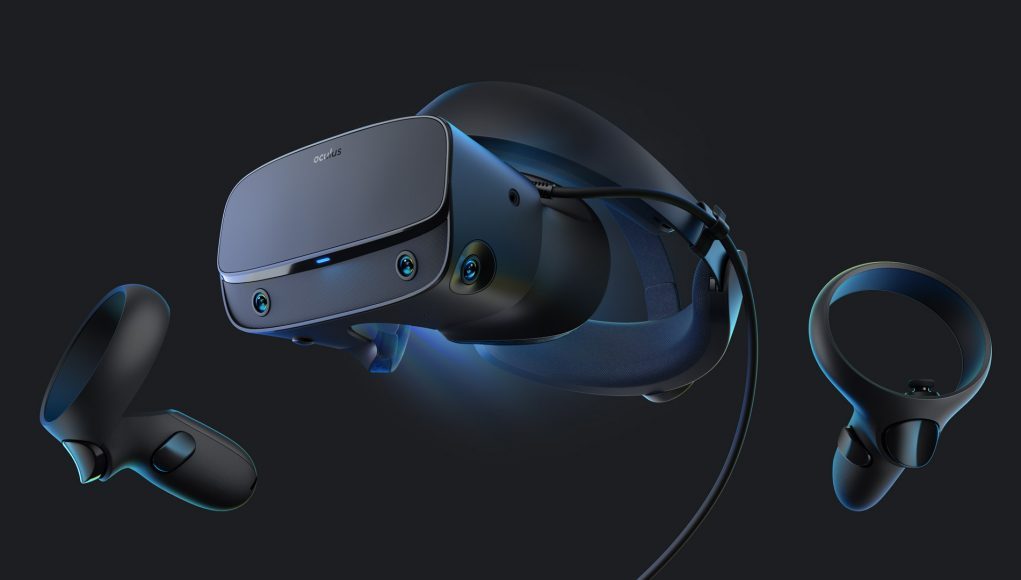Facebook today announced at F8, their annual developer conference, that pre-orders for Oculus Rift S are now officially live. Rift S is slated to ship on May 21st alongside the standalone VR headset Oculus Quest across 22 countries.
The company’s U.S. retail partners include Amazon, Best Buy, Walmart and Microsoft, and will be available for purchase both online and in stores. You can also pre-order Rift S through Oculus’ online store.
Rift S will be available for demo at Microsoft stores for a limited time, starting on May 21st.
Read our full review of Oculus Rift S
The Rift S headset bundle costs $400, and includes the headset itself, two Touch controllers, a reference guide, two AA batteries, and a mini DisplayPort to DisplayPort adapter.
Since it’s essentially a modest upgrade specs-wise to the original PC VR headset Oculus Rift, you’ll need a computer sufficiently powerful to run Rift S. Thankfully, minimum/recommended specs haven’t changed much since the original Rift, which despite a higher resolution (1,280 × 1,440 vs 1,080 × 1,200) is thanks to a lower display clock rate (80Hz vs 90Hz). For clarity: this is a tethered PC VR headset, and isn’t wireless.

Oculus says you’ll at very least need a PC running Windows 10, an NVIDIA GTX 1050 Ti / AMD Radeon RX 470 or greater, an Intel i3-6100 / AMD Ryzen 3 1200 – FX4350 or greater, 8GB+ RAM, DisplayPort 1.2 source (or Mini DisplayPort using included adapter), and a single USB 3.0 Port.
Oculus recommends you have a Windows 10 PC running an NVIDIA GTX 1060 / AMD Radeon RX 480 or greater, an Intel i5-4590 / AMD Ryzen 5 1500X or greater, 8GB+ RAM, and the same ports listed above. Check out this handy utility to see if your computer can run Rift or Rift S.
Oculus Rift S Specs
- Display: Single fast-switch LCD display – 2,650 × 1,440 total resolution (1,280 × 1,440 pixels per lens) clocked at 80Hz
- FOV: “Slighty larger” than Oculus Rift (estimated to be ~110 degrees)
- Optics: Improved Fresnel lenses promise sharper image quality over original Rift. No manual IPD adjustments, only in-software solution supporting a “best” fit for users between 61.5 mm and 65.5 mm
- Tracking: Oculus Insight tracking technology requires no external sensors or base stations for full 6DOF head and hand-tracking. Accomplished by five embedded tracking sensors
- Comfort: New halo headband, designed with Lenovo, boasts improved comfort and more appealing fit for quick on-and-off play. Sizing is quickly done through a single crank wheel at the back of the headband
- Facial interface + straps materials: Nylon Micro Yarn, Spandex materials. Removable/Replaceable facial interface
- Audio: Integrated into the headband with an open-ear design. 3.5mm jack for external headphones. Built-in microphone supports voice commands and can be toggled on and off
- Touch Controllers: Wireless, optically tracked with the on-board ‘Insight’ tracking solution. Offers the same button layout as original Touch controllers, albeit with a redesigned sensor area for suitable optical coverage
- Content: Access to Oculus Store Rift library including games like Beat Saber and Superhot VR, as well as upcoming titles like Asgard’s Wrath, Defector, and Stormland
– – — – –
If you’re looking for more extensive info on Rift S, check out our deep dive review here.







